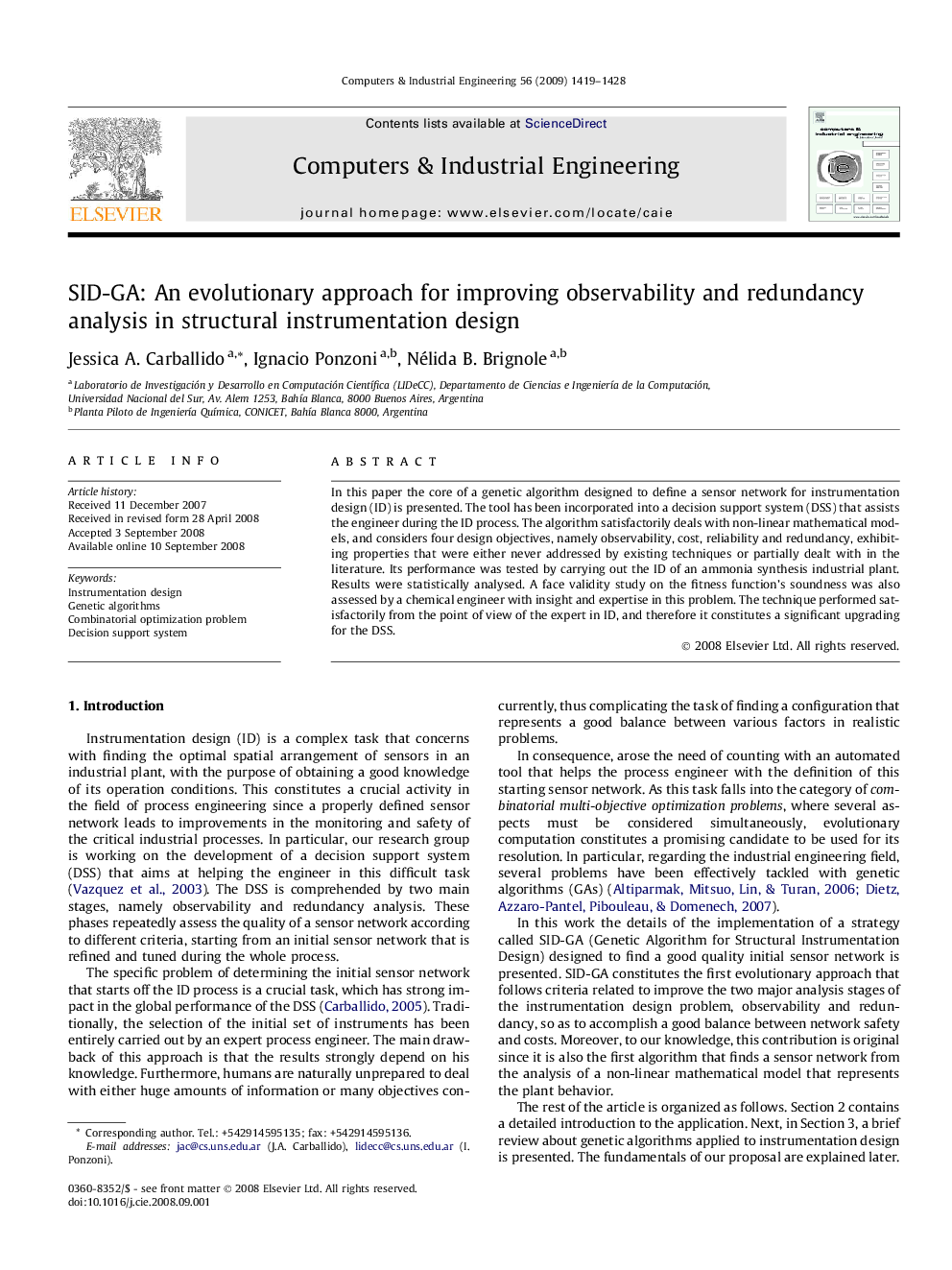| Article ID | Journal | Published Year | Pages | File Type |
|---|---|---|---|---|
| 1135497 | Computers & Industrial Engineering | 2009 | 10 Pages |
Abstract
In this paper the core of a genetic algorithm designed to define a sensor network for instrumentation design (ID) is presented. The tool has been incorporated into a decision support system (DSS) that assists the engineer during the ID process. The algorithm satisfactorily deals with non-linear mathematical models, and considers four design objectives, namely observability, cost, reliability and redundancy, exhibiting properties that were either never addressed by existing techniques or partially dealt with in the literature. Its performance was tested by carrying out the ID of an ammonia synthesis industrial plant. Results were statistically analysed. A face validity study on the fitness function's soundness was also assessed by a chemical engineer with insight and expertise in this problem. The technique performed satisfactorily from the point of view of the expert in ID, and therefore it constitutes a significant upgrading for the DSS.
Keywords
Related Topics
Physical Sciences and Engineering
Engineering
Industrial and Manufacturing Engineering
Authors
Jessica A. Carballido, Ignacio Ponzoni, Nélida B. Brignole,
